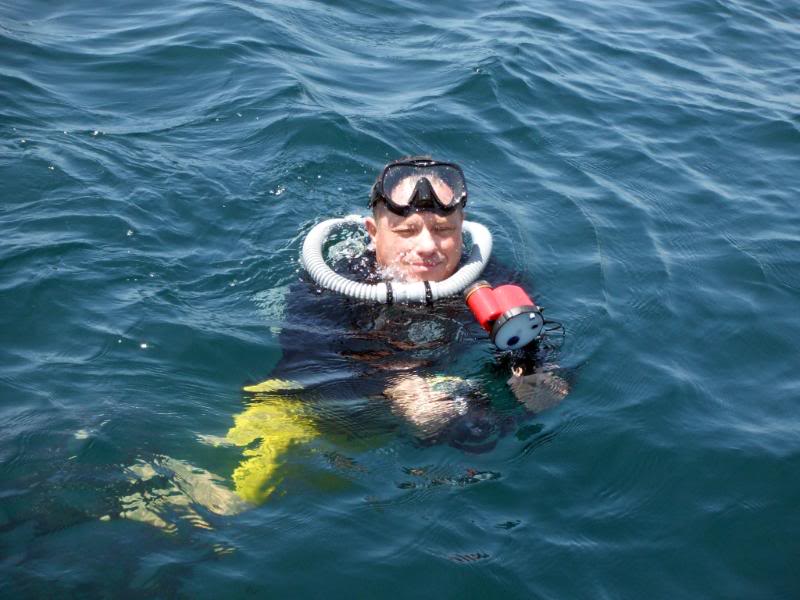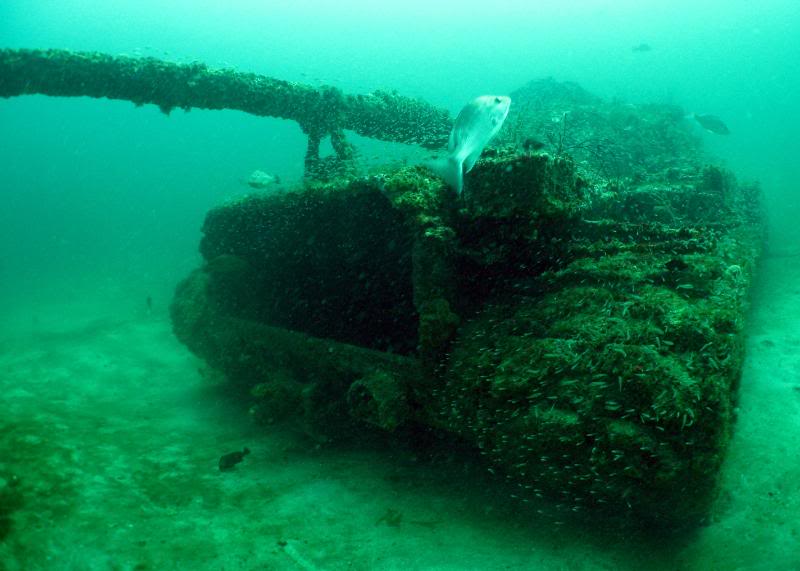They also used their hands for body positioning much more than the current fashion and they rarely stopped kicking (or hand finning) unless they were hanging onto something.Watch old Cousteau and Sea Hunt episodes. Divers were not as obsessives about never touching the bottom in the pre-BC era. Very little finning would take care of the slight negative buoyancy at the start of the dive and divers would often be touching the bottom when stopped. It was not unusual for divers in wetsuits to pick up rocks at the end of the dive is shallow water to compensate.
You are using an out of date browser. It may not display this or other websites correctly.
You should upgrade or use an alternative browser.
You should upgrade or use an alternative browser.
No wing on a backplate harness and tank for Caribbean shallow diving -how does this work?
- Thread starter Bubblesong
- Start date
Please register or login
Welcome to ScubaBoard, the world's largest scuba diving community. Registration is not required to read the forums, but we encourage you to join. Joining has its benefits and enables you to participate in the discussions.
Benefits of registering include
- Ability to post and comment on topics and discussions.
- A Free photo gallery to share your dive photos with the world.
- You can make this box go away
Yes. Using hands with the "opposition" movement, instead of paddling, was a significant part of training when I was a student at my first course, in 1975.They also used their hands for body positioning much more than the current fashion and they rarely stopped kicking (or hand finning) unless they were hanging onto something.
This technique is nowadays mostly employed by synchro swimming athlets, not by scuba divers.
It was elegant, efficient and very useful for cave and wreck diving in the Mediterranean Sea.
Unfortunately the technique disappeared due to the success of alternative techniques developed by guys operating in quite different conditions and using different equipment.
Of course their methods were also appropriate for those different conditions.
But in some ways they managed to convince others that their approach was the only "right" one (do it right!), and that a so-called "technical" diver must use those techniques everywhere...
Preach brother. Most of my hours underwater are when I was a kid holding my breath and playing in pools/lakes/rivers/ocean. No fins or wetsuit, just googles and a swimsuit. I used my hands a lot for fine positioning. It's more efficient than engaging the large muscles of the legs. I still occasionally use my arms on scuba, but peer pressure means I do it a lot less than is probably optimal.Yes. Using hands with the "opposition" movement, instead of paddling, was a significant part of training when I was a student at my first course, in 1975.
This technique is nowadays mostly employed by synchro swimming athlets, not by scuba divers.
It was elegant, efficient and very useful for cave and wreck diving in the Mediterranean Sea.
Unfortunately the technique disappeared due to the success of alternative techniques developed by guys operating in quite different conditions and using different equipment.
Of course their methods were also appropriate for those different conditions.
But in some ways they managed to convince others that their approach was the only "right" one (do it right!), and that a so-called "technical" diver must use those techniques everywhere...
Bob DBF
Contributor
These plastic backplates are light and very comfortable, my actual BCD (an hybrid Coltri made in 1989) employs one of them.
I wouldn’t be surprised if they still use those plastic backplate in BCs now, as I had one in a sherwood BC made around 2009. No pesky patent, and it's worked well for decades.
I even have one made for doubles, back from the horse collar BC days. I'll have to root around, find, and post a picture for those that haven't seen one.
I still occasionally use my arms on scuba, but peer pressure means I do it a lot less than is probably optima
I solo, so no diver peer pressure and the seals and fish seem to have no issue with using all their appendages in efficiently moving from one point to another, I'm with them.
I do not use my hands to fin or manuver with. I carry a camera most dives. In the day and now, I manuver entirely with fins and maybe the occasional one finger push off. When everybody is trying to shoot the same little frog fish and I get hemmed in, I will admit to it, I hit the inflator button and bail out vertically and then hit the butt dump and get neutral once clear of the crowd, corals and other delicate things. I am not advocating going back. BCs are good for something after all  .
.
I know the Sea Hunt and other films of the era show hand swimming and all manners of goofiness but that was TV. They also regularly had their regulators on upside down! I was taught hands at my side or crossed under or holding onto my speargun or camera, not flailing about. Besides, if you are hand finning how are you supposed to carry your BFK to cut the bad guys hoses or tote about ballast rocks? Phooey on hand finning then and now.
No BC diving out of Destin from our little boat. Anchored over the "Tanks" dive site. Voit reg sputtering in my face as I prepare to yell to my wife to please come get me as again there is a freaking bull shark underneath me.


Not going to be hand finning with a camera in hand.
Shortly after this day, local stories were that the resident pod of dolphins killed a bull shark and the fracus was wittnessed by local fisherman. Just to the west and inshore of the west jetty. I dunno. The "Tanks" is an area frequented by spearos so --- .
N
I know the Sea Hunt and other films of the era show hand swimming and all manners of goofiness but that was TV. They also regularly had their regulators on upside down! I was taught hands at my side or crossed under or holding onto my speargun or camera, not flailing about. Besides, if you are hand finning how are you supposed to carry your BFK to cut the bad guys hoses or tote about ballast rocks? Phooey on hand finning then and now.
No BC diving out of Destin from our little boat. Anchored over the "Tanks" dive site. Voit reg sputtering in my face as I prepare to yell to my wife to please come get me as again there is a freaking bull shark underneath me.


Not going to be hand finning with a camera in hand.
Shortly after this day, local stories were that the resident pod of dolphins killed a bull shark and the fracus was wittnessed by local fisherman. Just to the west and inshore of the west jetty. I dunno. The "Tanks" is an area frequented by spearos so --- .
N
johndiver999
Contributor
This is not correct. BC's were commonly used in the 70's. To say that wetsuit thickness was limited and then imply that only 3 mm was available is COMPLETELY incorrect. 1/4 inch and even 3/8 inch thick wetsuits were easily obtained and were pretty much a standard in cold water environments. I'm not sure why you would think these statements are generally applicable. I'm surprised those "weird Vintage divers" aren't having a heart attack over those inaccuracies.That is how people were diving in the seventies, 50 years ago, when I started diving.
These plastic backplates are light and very comfortable, my actual BCD (an hybrid Coltri made in 1989) employs one of them. There are not significant buoyancy problem if used with a small-size single tank (at the time it was a 10 liters, 200 bar, steel, mostly), as the weight excursion full-empty is just 2 kg, which any decent diver can compensate easily with his lungs.
At the time there were just wet suits of limited thickness (my one was a 3mm Cressi), made of little air and a lot of neoprene rubber, so it was crushing much less than today's very soft neoprene suits. In substance, diving to 30m, at the beginning of the dive, with the tank full, one was negative by no more than 3 kg. Which did reduce progressively during the dive, while air was consumed and depth reduced, so at the end the deco stop was feasible in perfectly neutral buoyancy.
BCDs, at the times, were used only when diving deep, with ticker suits, and using twin tanks. For shallow recreational diving the BCD was entirely superfluous.
Now in many places (for example at Maldives) the BCD is mandatory for safety reasons (divers lost by the boat and floating for hours before being recovered), but during dive the BCD is still entirely useless, as usually no diving suit is required in those warm waters. So people simply use a very minimal-size BCD, just for compliance, keeping it empty for the whole dive, and using as a floating helper after surfacing, while waiting for the boat.
Here one of these plastic backplates:

Perhaps it's accurate for 1970's Italy?
BCs were not available until the mid-late 1970s in the US. A few people jury-rigged their Bouée Fenzy horse collar emergency inflation devices with a power inflator starting around 1973, which were made for early semi-drysuits. The Fenzy had a small HP bottle for inflation.
$125 in 1973 = $833 in 2022. Plus shipping!BCs were not available until the mid-late 1970s in the US. A few people jury-rigged their Bouée Fenzy horse collar emergency inflation devices with a power inflator starting around 1973, which were made for early semi-drysuits. The Fenzy had a small HP bottle for inflation.
$125 in 1973 = $833 in 2022. Plus shipping!
Yes, it was very expensive. Pros like the editors of Skin Diver Magazine, Bob Hollis, and Al Giddings were the kind of divers that had them. I received one as a VERY generous gift from the importer just before I joined the Navy. That thing pulled my sorry butt out of some dicey situations.
Similar threads
- Replies
- 34
- Views
- 2,110
- Replies
- 6
- Views
- 451
- Replies
- 1
- Views
- 701
- Replies
- 27
- Views
- 2,638



